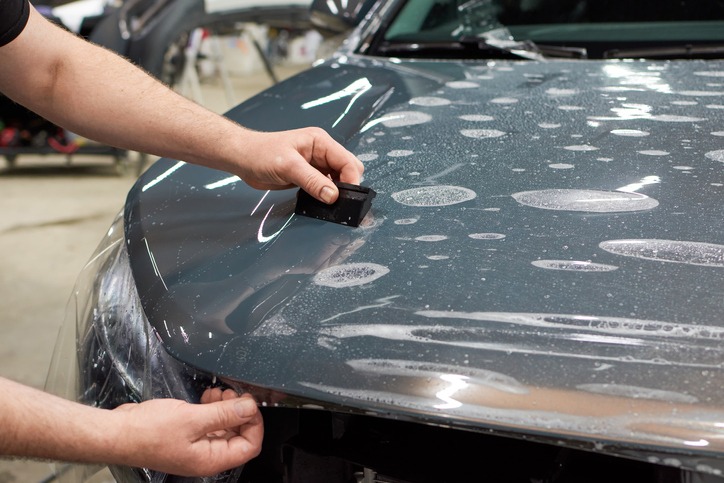Vinyl wraps are an awesome way to turn your car into a moving advertisement, but the vinyl isn’t going to last forever. Luckily for you, here are five tips that’ll help maintain your vinyl wraps for years on end.
After talking about the car wrap on Carine’s Mazda RX-8, we got a lot of questions about how to maintain vinyl wraps. That’s why we talked to an owner and found out what their tips are for taking care of your wrap.
VCar wraps have been around for about a year. They’re not just for decorative purposes and are also known for the protective quality they provide. Usually starting at $2800, your car might be wrapped in a workshop
Since car wraps disadvantage from wear and tear over time, it is important to take care of your car wrap with special attention. This will help you fend off UV rays, bug splatters and bird droppings that would otherwise leave craters on your car wrap.
Vinyl car wraps are simply easy peel-and-stick sheets of plastic film, but have you seen the many different colors & patterns we have available? IThere has been a lot of progress in the car wrap industry over the last few years and it’s always exciting to see all the new developments. Metallic, reflective, matte, gloss and more! Not to mention beautiful colors, many of which can be matched exactly to those from your factory paint job.
Why Vinyl Wrap?
The vinyl wrap is a relatively new trend in the automotive industry. It is an alternative to painting your car and it offers many benefits that are not available with traditional car wrapping. The vinyl wrap is a relatively new trend in the automotive industry. It is an alternative to painting your car and it offers many benefits that are not available with traditional car wrapping.
The first benefit of using a vinyl wrap on your vehicle is that you get to choose any color you want for your vehicle. You don’t have to worry about getting the right paint color or having any special skills when it comes to painting because all you need to do is choose from the colors offered by the manufacturer and apply them on your vehicle. This saves you time, money, and the hassle of dealing with messy paint jobs!
Vinyl wrap can be applied to a car, truck, boat or anything else for that matter. Vinyl wraps are the new trend in advertising and marketing. They are cheaper than traditional advertising methods such as billboards or TV ads.
The vinyl is made from a high-quality plastic and is cut into any shape desired by the customer. This can be done using a plotter cutter or computer software such as Adobe Illustrator or Inkscape. The vinyl wraps are then applied to the desired surface using pressure and heat so they adhere well to the surface without any air bubbles.
Vinyl wrap is a cost-effective way to make your car stand out from the crowd. Vinyl wraps are durable and can last for years on a car, giving it a custom look that you can change as often as you like. They are also easy to remove when it’s time for a new design.
Things to Consider Regarding Your Vinyl Wrapping Project
The following are a few things to consider when it comes to vinyl wrapping your car.
- What color should the vinyl be?
- What type of car should I get vinyl wrapped?
- How does the process work?
- How much will it cost me for a full wrap?
Vinyl wrapping is a process of applying a vinyl film to the exterior of an object. This film can be applied in many different patterns, designs, and colors. Vinyl wrapping is often used to protect the exterior of vehicles from wear and tear as well as for aesthetic purposes.
There are many things to consider when you are looking into vinyl wrapping. You will need to decide on the type of vinyl you want, whether you want your vehicle wrapped or just part of it, how much time you have available for installation, and how much money you want to spend on the project.
The following are some considerations that should be made before starting a vinyl wrapping project:
- What type of vehicle do I have?
- How much time do I have available for installation?
- How much money am I willing to spend on this project?

